As California enters an extreme drought, the California Department of Fish and Wildlife is beginning to truck millions young hatchery-raised Chinook salmon closer to the Pacific Ocean to assist the fish with migration. The state is taking provocative action due to the drought and the projected low water levels in Central Valley rivers which could decrease the chance of survival for the young migrating fish.
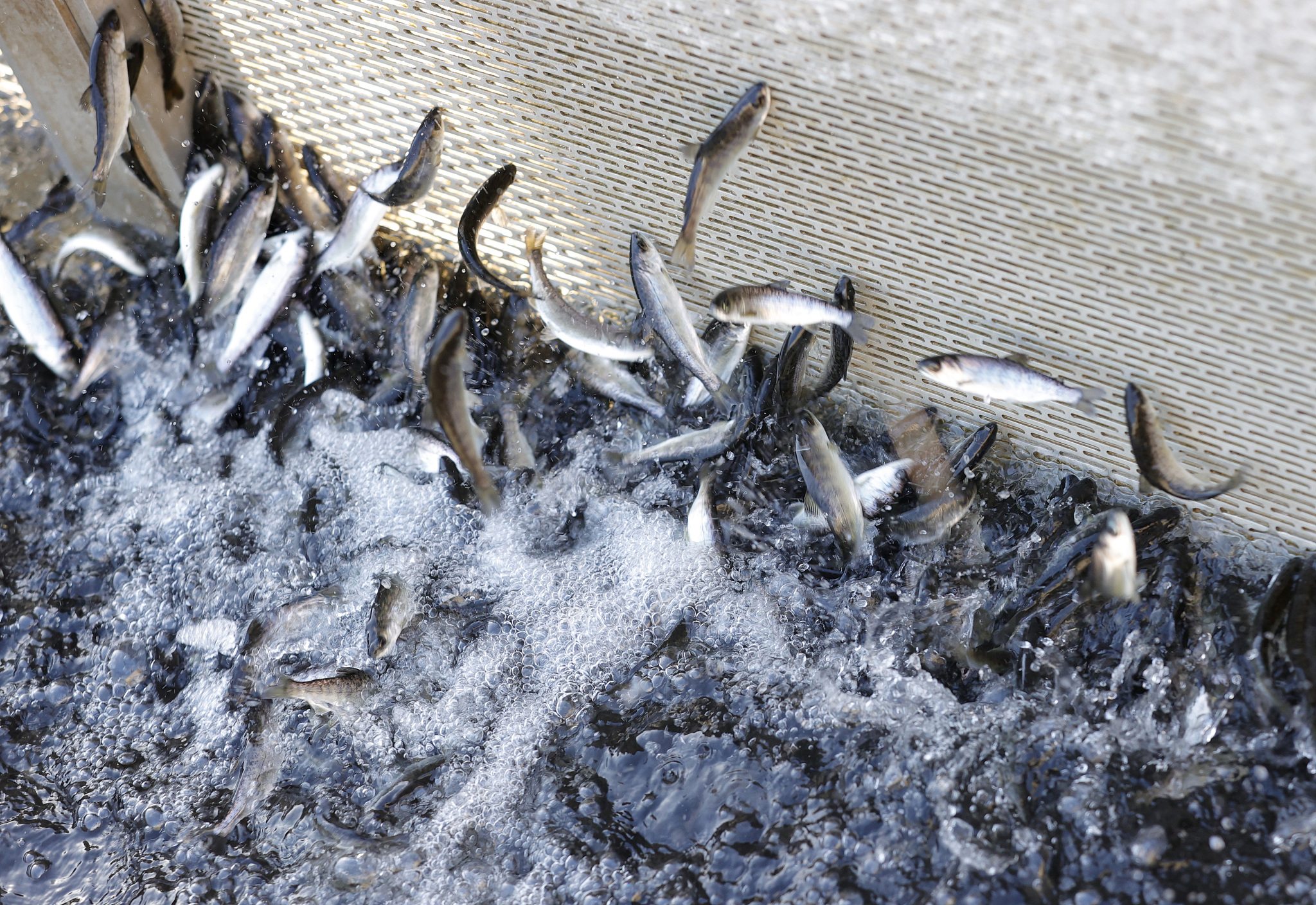
Young fingerling Chinook salmon jump out of the water in a raceway at Nimbus Hatchery on May 11, 2021 in Gold River, California. /VCG
Young fingerling Chinook salmon jump out of the water in a raceway at Nimbus Hatchery on May 11, 2021 in Gold River, California. /VCG
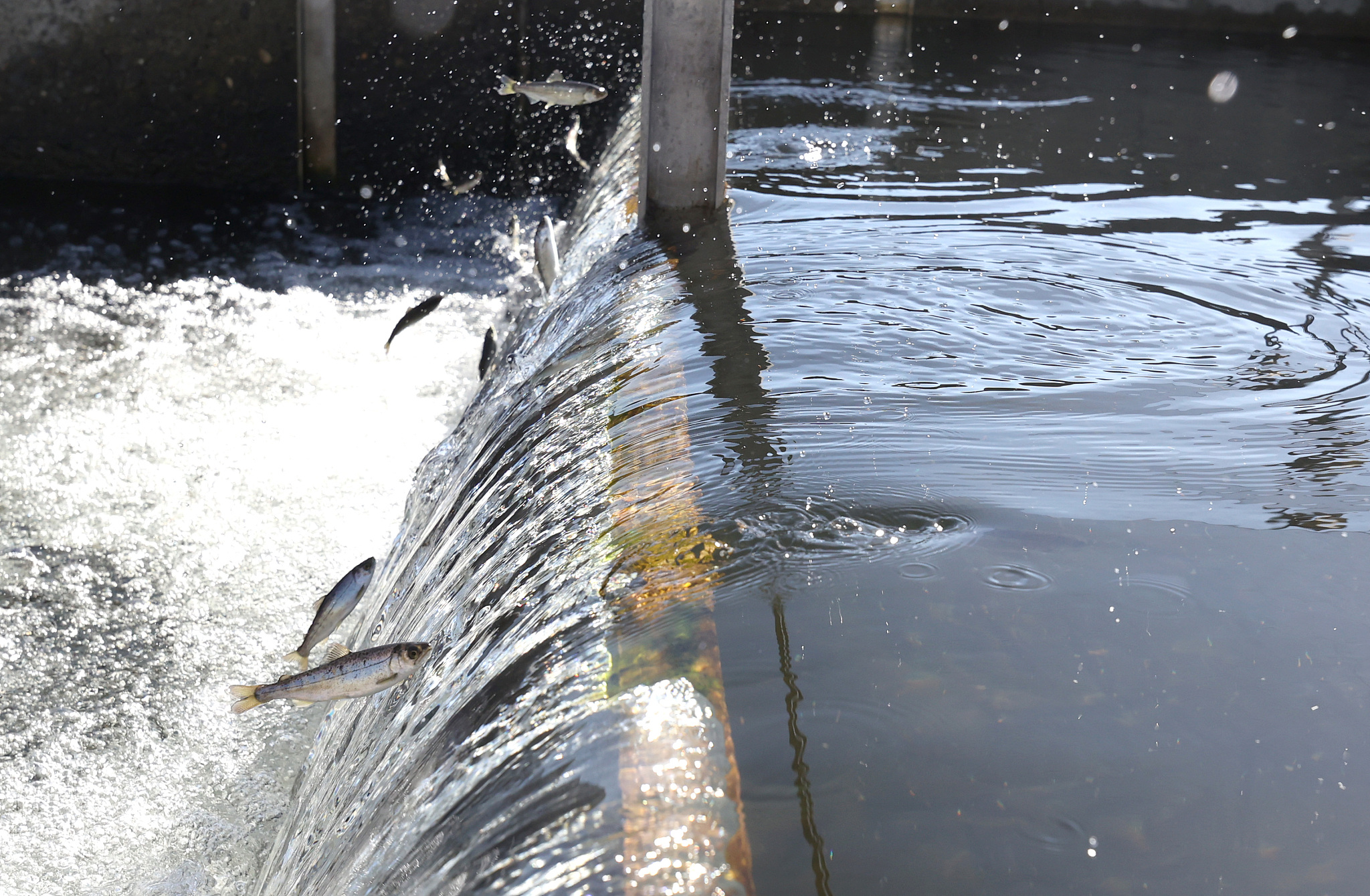
Young fingerling Chinook salmon jump out of the water in a raceway at Nimbus Hatchery on May 11, 2021 in Gold River, California. /VCG
Young fingerling Chinook salmon jump out of the water in a raceway at Nimbus Hatchery on May 11, 2021 in Gold River, California. /VCG
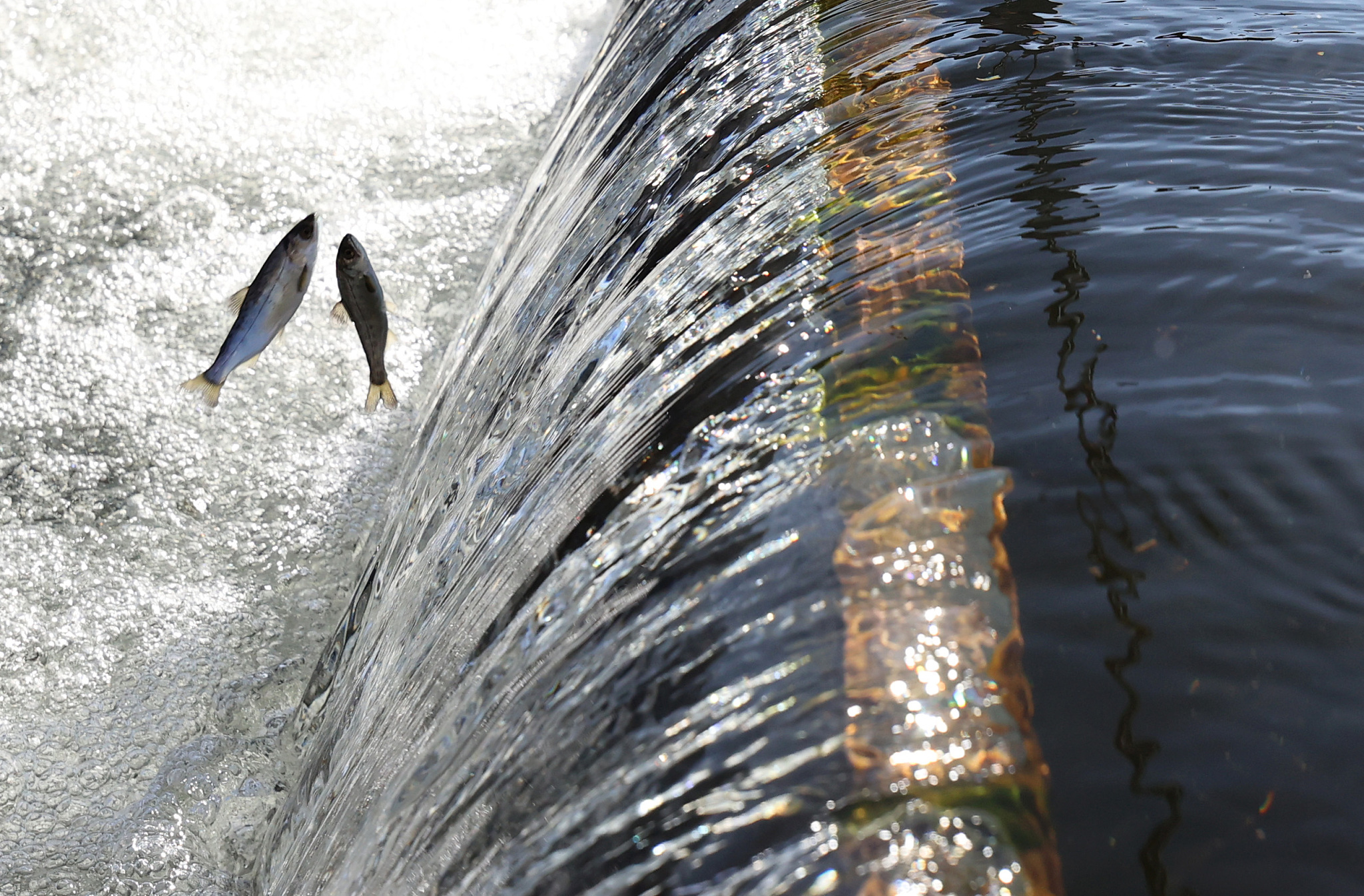
Young fingerling Chinook salmon jump out of the water in a raceway at Nimbus Hatchery on May 11, 2021 in Gold River, California. /VCG
Young fingerling Chinook salmon jump out of the water in a raceway at Nimbus Hatchery on May 11, 2021 in Gold River, California. /VCG
Local media reports say that California is now in its second year of drought after a winter with little precipitation.
The California Department of Water Resources also noted that it's the state's fourth-driest year on record, especially in the northern two-thirds of the state.
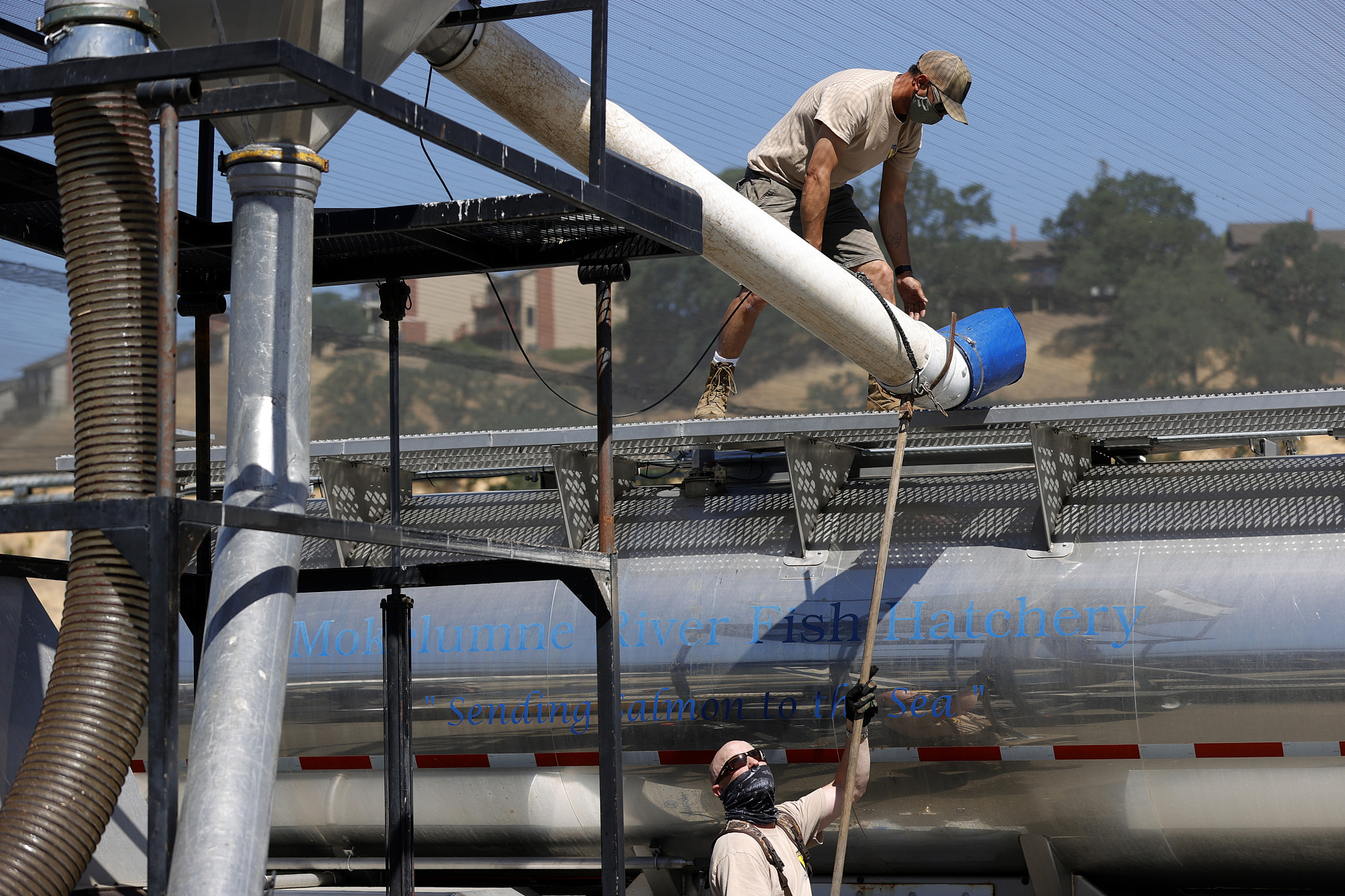
California Department of Fish and Wildlife workers connect a tube before transferring thousands of young fingerling Chinook salmon from a raceway into a tanker truck at Nimbus Hatchery on May 11, 2021 in Gold River, California. /VCG
California Department of Fish and Wildlife workers connect a tube before transferring thousands of young fingerling Chinook salmon from a raceway into a tanker truck at Nimbus Hatchery on May 11, 2021 in Gold River, California. /VCG
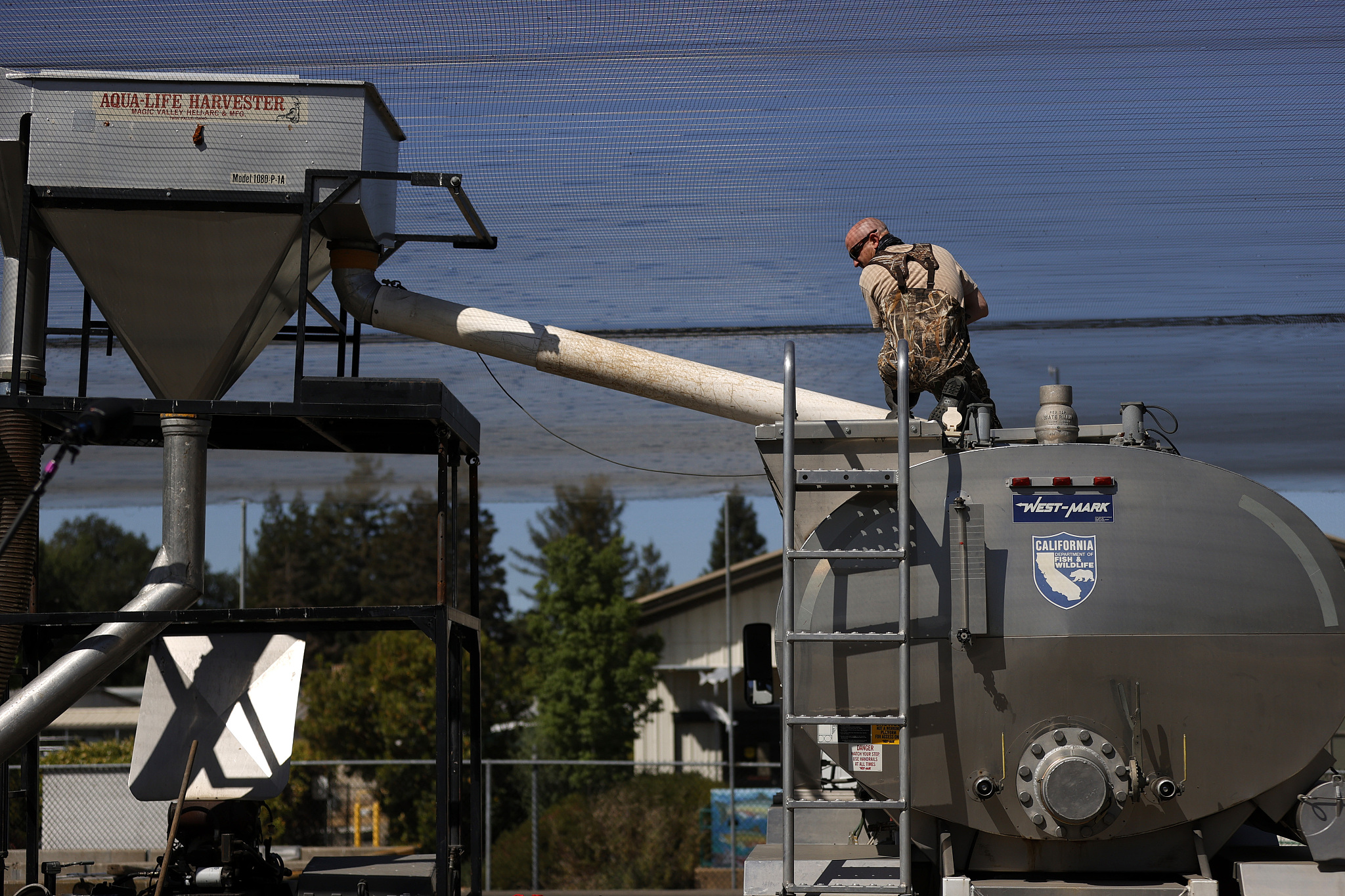
A California Department of Fish and Wildlife worker stands on his truck as thousands of young fingerling Chinook salmon are being transferred from a raceway into the tanker truck at Nimbus Hatchery on May 11, 2021 in Gold River, California. /VCG
A California Department of Fish and Wildlife worker stands on his truck as thousands of young fingerling Chinook salmon are being transferred from a raceway into the tanker truck at Nimbus Hatchery on May 11, 2021 in Gold River, California. /VCG
The chinook normally begin their life in the rivers and then swim to the cold waters in the Pacific where they will stay for three years before returning to their spawning grounds.
Although the man-assisted migration is intended to increase the salmon's survival probabilities, the risks remain that some of them might not be able to find their way back the the spawning place when they are released to a different location by men.
(If you want to contribute and have specific expertise, please contact us at nature@cgtn.com.)

